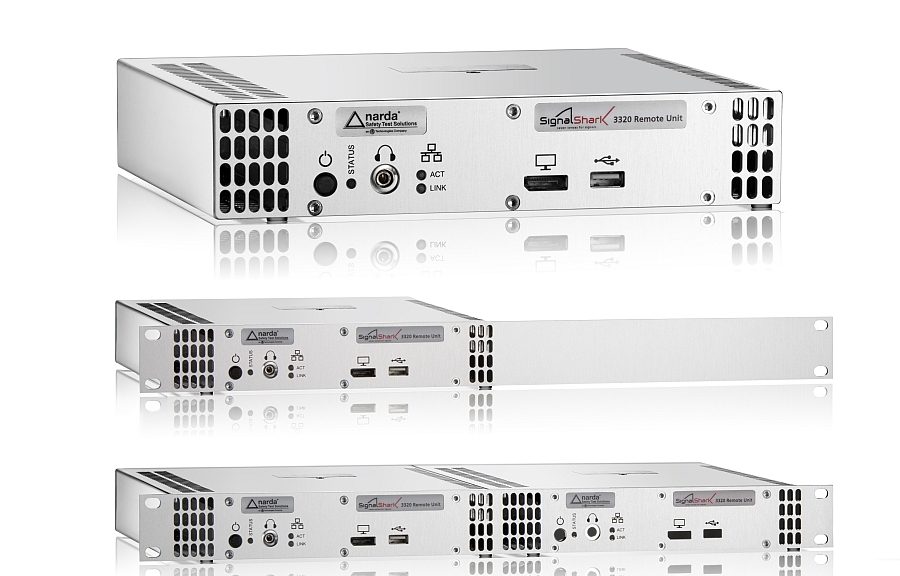- Narda Safety Test Solutions announces a standalone version of its SignalShark handheld spectrum analyzer.
- This instrument operates remotely and in real time to detect, analyze, classify and locate RF signals in the frequency range between 8 kHz and 8 GHz.
- This analyser without front panel is based on the specifications of the German manufacturer’s SignalShark portable analyser.
- It is suitable for centralized monitoring of sites spread over a large area.
With its 40 MHz real-time bandwidth, the SignalShark remote signal analysis module is able to detect pulse signals with a duration of 3.125 µs and a 100% probability of interception (POI). According to Narda, the instrument calculates FFTs of up to 16,384 points with an overlap of at least 75%, allowing each signal event, even if extremely short and infrequent, to be reliably detected.
The instrument can transmit a 20MHz I/Q data stream with 16-bit resolution according to the specifications of the VITA 49 standard (up to 25.6 MHz sampling rate).
In addition, in Spectrum Mode, the scanning rate up to 50 GHz/s guarantees signal detection in wide frequency bands.
The measurement platform is identical to that of the manufacturer’s portable SignalShark analyzer. It includes a computer running Windows 10 and four switchable RF inputs. These allow, for example, to connect several directional antennas or different antennas covering specific frequency ranges. An antenna switch is therefore not necessary as is the case with a traditional spectrum analyzer with a single RF input.
The on-board computer serves as an evaluation unit that ensures that only processed and qualified data are transmitted to the central office, in particular in the event of the detection of irregularities in the observed spectrum. This module can therefore perform all monitoring tasks independently. It requires a much smaller transmission band than that required for continuous transmission of all signals to a central station for subsequent evaluation. However, it is possible to connect to the instrument at any time remotely in order, for example, to consult the measurement history for the previous 24 hours.
Direction finding
This new remote monitoring module can be used with an automatic antenna for direction finding and arrival time difference (TdoA) measurement. For example, it can be implemented by authorities for the location of interference in urban areas through several centrally controlled remote spectrum monitoring stations. In this case, an automatic antenna locates the direction of an interference source while at least two such antennas at different points define the precise position by triangulation. To do this, a SignalShark remote monitoring module is installed at several strategic locations. The module without display or HMI can be equipped with solar cells and a buffer battery for autonomous power supply. The signal causing the interference is then transmitted by LTE modem to the operator’s remote computer via the mobile communication network.
Open protocols
Standard Commands for Programmable Instruments (SCPI) for the control of programmable instruments allow communication with the SignalShark module and simplify the development of the corresponding driver. The VITA 49 streaming standard ensures that I/Q data is output in a format that is compatible with other software. Its Windows 10-based platform is also open to third-party vendor applications.
Mobile and stationary applications
The Stand-alone version of the SignalShark RF Remote Signal Analysis Unit can be used as a stand-alone instrument to which a keyboard and display can be connected via its USB ports. This 2.1 kg module, which is integrated into a compact 1 HU aluminium housing, can be integrated alone or with another module (side by side or stacked) in a 19 inch rack. Several of these modules can be associated and cascaded as required. The first instrument can handle frequencies from 360 to 400 MHz, for example, and the second from 400 to 440 MHz.






